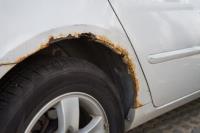 Add My Company
Add My Company
Sign In
Is Your Car Ready for Winter Salt?
05-12-2018

Just this week I received a copy of Lincolnshire County New Winter/Spring 18/19 magazine, whilst looking through it I saw an article regarding the gritters in Lincolnshire and plans regarding how they intend to keep Lincolnshire moving. Now anyone who’s visited our Spalding premises in winter knows it’s hard to make out the road from the grass verge and due to the incredibly flat nature of South Lincolnshire this can become quite dangerous.
Whilst we here at Rustbuster appreciate all the council’s efforts to keep us moving during these colder months it’s worth remembering the effects that this road salt has on our vehicles.
Here are the Key Stats for Lincolnshire,
• 1869 miles – The distance covered by gritters when temperatures fall below 1 degree Celsius.
• 26,000 tonnes – The amount of salt stored for winter.
• 200 tonnes – The amount of salt used on an average gritting run.
• £4 million – the budget of winter maintenance.
Salt is one of the biggest corrosion accelerators the automotive industry faces!
So why is salt used?
Salt was first used to de-ice roads in New Hampshire (USA) in 1938, they used granular Sodium Chloride, the Americans realised that salt would lower the freezing point of water and keep the roads from icing up.
Nowadays modern testing methods have reduced the use of Sodium Chloride for the more favourable Magnesium Chloride. Magnesium de-icing salt continues to melt snow and ice until the temperature reaches -25 degree Celsius. Magnesium is also a lot less damaging to the roads surface than Sodium keeping maintenance costs lower.
Why gritted roads are harmful to our vehicles!
Gritting the roads obviously causes snow and ice to melt. Great that’s what we want! Sadly this leaves behind gallons of salty water. Water enables fast oxidation in Iron. Salt water acts as a fast conductor that causes several electrolysis reactions.
Therefore, if you drive your vehicle on de-iced roads you will greatly increase the chances of it rusting.
So how can I remove this road salt from my vehicle?
Chlor–X Salt Remover
With this amount of road salt on the cars body, how much more will be present on the underbody?
You can use water to remove road salt however this will not remove all the salt, why?
Salt crystals have a high surface tension and therefore require something to change this chemical state, what is surface tension? Surface tension is the elastic tendency of a fluid surface which makes it acquire the least surface area possible. Adding water alone to remove salt increases its surface tension.
So, if water alone won’t work in removing these salt crystals how do we remove it?
Rustbuster have manufactured a surface surfactant (that’s a mouthful) called Chlor–X Salt Remover, a surfactant reduces the surface tension of a liquid in which is dissolved. Chlor-X reduces the surface tension of water and allows the crystals to be washed away by removing its ability to stick to a surface.
Chlor–X Salt Remover
Rustbuster Chlor-X is available in many different pack sizes and strengths and can be viewed online at www.rust.co.uk.
The UK is planning on gritting some 2 million tonne of salt this winter! Salting roads is here to stay so make sure your vehicle does the same.
Don’t let the salted roads rot your precious metal. Get yourself prepared now with a bottle of Chlor X
For more information on Is Your Car Ready for Winter Salt? talk to Rustbuster Ltd
Enquire Now
List your company on FindTheNeedle.

